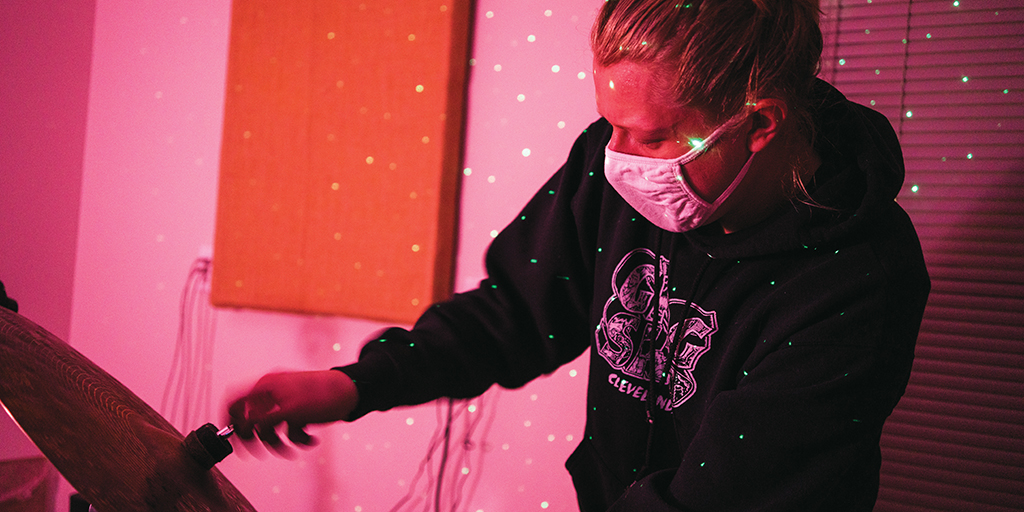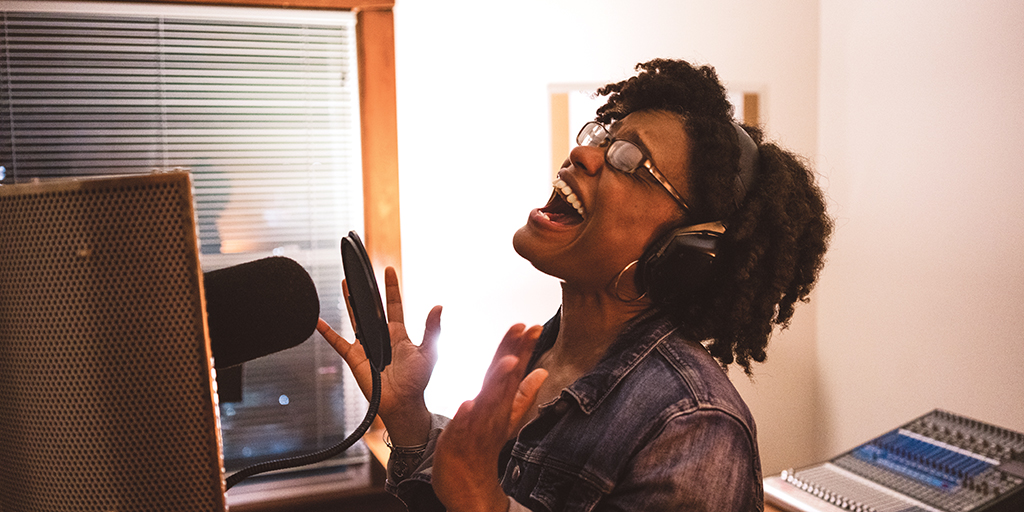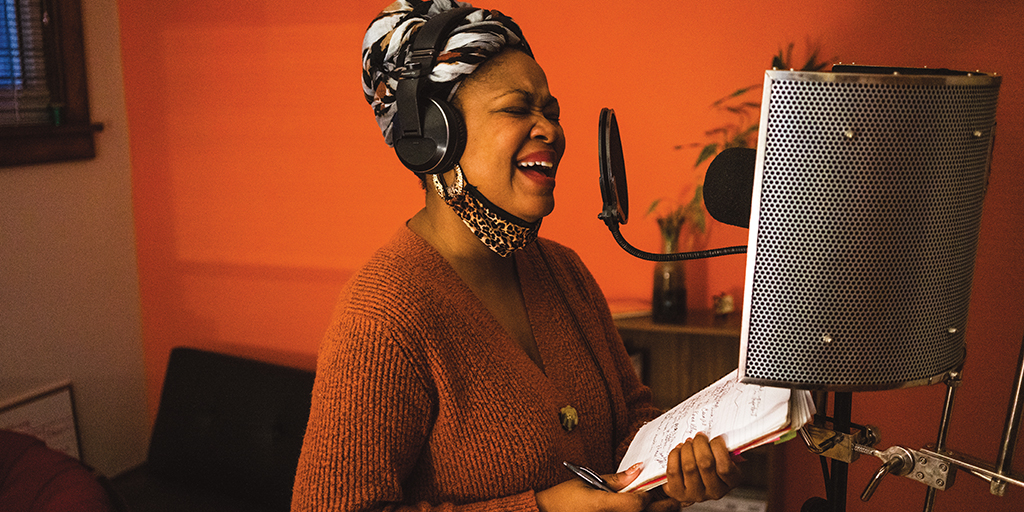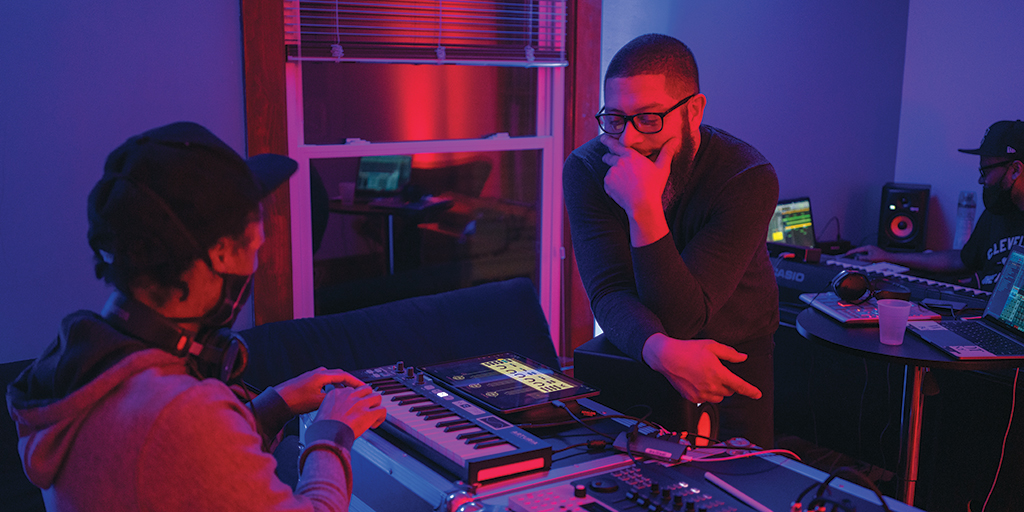Three different tambourines sit on top of two bongos in front of Elijah Gilmore. The Cleveland percussionist shakes one, smiles and puts it on his lap. He shakes the second, grimaces, and puts it on the floor. He shakes the third and puts it on the ground next to the other instrument. He picks the first tambourine back up, shakes it once more for confirmation, and gives an emphatic nod to Dan Fernandez, a fellow Cleveland percussionist.
The two are sitting across from one another in Fernandez’s third floor attic-turned-recording studio ready to make music. Fernandez nods back to Gilmore in response, turns to face a bank of computer monitors and hits play on a song for which Gilmore is providing additional instrumentation.
The track, “Scratch The Paint Off The Walls,” evokes the grooves of Stevie Wonder, the driving beats of cruising in a Cadillac through Cleveland and soaring background vocals that get lodged in your brain.
As the track plays, Fernandez is a blur of motion adjusting the sound levels in tandem with Gilmore’s performance, their feet tapping in perfect unison. They repeat the process twice more: once with Gilmore playing some shakers and another with him on the bongos. The two pass energy back-and-forth in a well-practiced and comfortable routine, one you would expect of two of the most accomplished and sought-after percussionists in the city. But, for this new musical journey they’re both embarking on, they’ve only just met an hour before, never having worked together before.
They are contributing to In Search of the Land, a collaborative and eclectic album that is part poetry and part music. Sponsored by Twelve Literary Arts — a Cleveland-based literary arts and education nonprofit — the project has assembled more than 60 poets, musicians, singers, engineers and voices who either currently reside in or have roots in Cleveland, all for a musical exploration of the city’s story in a way that has never been done before.
“These tracks capture a social and political zeitgeist of this particular moment in time,” says Daniel Gray-Kontar, founder and executive artistic director of Twelve Literary Arts. “We want to tell the story of what it is to be in search of freedom and opportunity for all people, a story of Cleveland from those who actually live here.”
Debuting June 19, the 12-track album is an unabashed celebration of Blackness that arrives on the nationally celebrated Juneteenth anniversary of the end of slavery. Inspired by the poems of young Black women under the age of 25, the album created by and featuring predominantly Black musicians working in genres of jazz, hip-hop, rap and acoustic pop contains a narrative thread that speaks to the soul of Cleveland.
“Every moment on this album communicates the soulful quality of this town,” says Gray-Kontar. “Cleveland is a city with soul and we want to honor that.”








